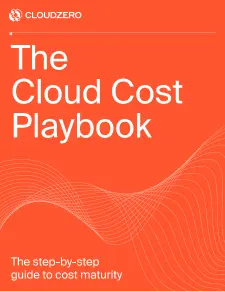Kubernetes is now the backbone of modern software infrastructure, helping teams deploy, scale, and manage applications efficiently across clouds. But when it comes to understanding costs, Kubernetes remains opaque.
Teams often can’t answer basic questions like:
- What’s driving our Kubernetes spend?
- Which clusters are overprovisioned?
- How does this map to the customers and products that generate revenue?
How do you solve the gap between engineering usage and financial visibility? CloudZero’s new Kubernetes capabilities are built to address this challenge.
Kubernetes: Essential, Yet Opaque
Kubernetes (K8s) organizes applications into containers and runs them across clusters — groups of machines managed by a control plane and worker nodes. But as Kubernetes abstracts infrastructure, it also makes costs harder to view and understand.
For most organizations, Kubernetes spend is spread across thousands of pods and containers, with no straightforward way to tie CPU or memory usage to business context. Platform and FinOps teams need to piece together fragmented data and surmise where the waste really is.
Idle clusters and over-provisioned workloads consume resources. Recent studies say 40–70% of Kubernetes capacity goes unused.
CloudZero’s newest release helps by connecting Kubernetes metrics, cost data, and business dimensions into a single FinOps platform.
Introducing CloudZero Enhancements For Kubernetes
CloudZero’s enhanced Kubernetes capabilities make containerized costs transparent, actionable, and aligned to business value.
The release includes three new features:
- Kubernetes usage metrics in CloudZero Explorer: Delivers full visibility into cost and usage by cluster, namespace, workload, pod, and container, turning opaque data into clear insight.
- Optimization recommendations in CloudZero Optimize: Automatically identifies CPU and memory overprovisioning, shows efficiency scores, and provides precise recommended actions to reduce workloads and reclaim wasted spend.
- Kubernetes unit economics dashboards in CloudZero Analytics: Translates Kubernetes spend into business context (like cost per product, environment, or customer) giving engineering and finance teams a shared view of value.
You can explore these new capabilities live at KubeCon North America, November 10–13 in Atlanta, Georgia (Booth #751).
Together, these capabilities give teams the ability to see exactly where Kubernetes money goes, how efficiently it’s being used, and what to do about it. It’s all inside the CloudZero platform that powers cost intelligence for AWS, Azure, GCP, Snowflake, Databricks, and AI providers.
From Visibility To Action
Kubernetes users can stop inferring costs from cloud billing files or third-party dashboards. CloudZero Explorer surfaces native Kubernetes metrics, providing cost visibility in the same terms engineers use every day: clusters, workloads, namespaces, pods, and containers.
The result is platform engineers can pinpoint inefficient clusters or runaway workloads in seconds, without switching tools or losing context. FinOps practitioners gain the same view, enabling real spend conversations with engineers.
CloudZero Optimize adds to that foundation with optimization recommendations based on real usage patterns. It highlights over-requested CPU and memory allocations that inflate cloud bills, helping engineers adjust workloads confidently without risking performance.
And with CloudZero Analytics, organizations can now connect Kubernetes efficiency to business outcomes. Unit economics dashboards show how K8s spend rolls up to products, customers, and teams, highlighting the true cost to deliver value.
Solving Real Kubernetes Problems
For many CloudZero customers, Kubernetes costs were a major source of blind spots:
- Shutterstock achieved 98%+ Kubernetes cost accuracy across AWS and GCP by tracking more than 500 Kubernetes labels — something prior tools couldn’t do.
- Skyscanner turned to CloudZero after losing cost visibility during its move to Kubernetes, regaining clarity into cluster-level efficiency and allocation accuracy.
These organizations share a common thread: Kubernetes became central to their infrastructure, but financial visibility lagged. CloudZero gave them the language and precision to bring engineering and finance onto the same page.
The FinOps Advantage
Kubernetes cost management is really about connecting efficiency to profitability. By making Kubernetes data visible in the same FinOps model that powers Dimensions, unit economics, and multi-cloud cost allocation, CloudZero gives companies a unified way to measure and improve cost performance across all environments.
As CloudZero CTO Erik Peterson put it:
“Kubernetes has become the backbone of modern cloud infrastructure, but understanding its costs has been anything but straightforward. With these new capabilities, we’re giving engineering and FinOps teams a unified view of cost, usage, and efficiency — so they can see exactly how clusters are performing, where waste exists, and how every dollar contributes to business outcomes.”
A Clearer View Of Kubernetes
As Kubernetes grows, visibility and accountability will define the next phase of FinOps maturity. CloudZero’s Kubernetes enhancements give platform and finance teams a shared foundation for cost intelligence: where every container, pod, and cluster can be measured, optimized, and tied to business impact.Visit us this week at KubeCon in Atlanta (Booth 751) to learn more. Or, visit cloudzero.com to learn more about CloudZero’s FinOps platform for cloud, AI, and Kubernetes cost intelligence.








